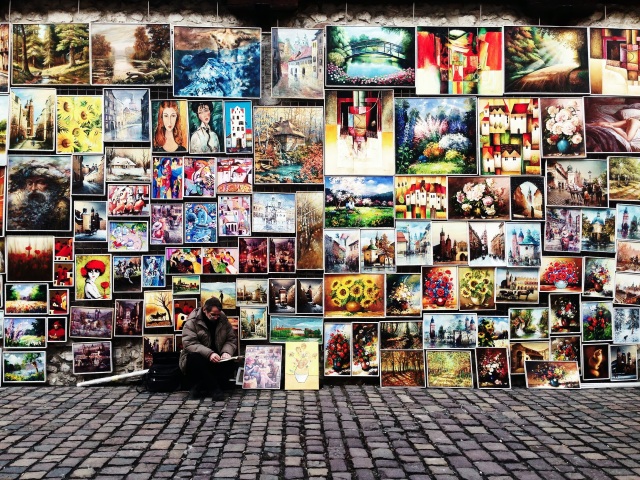“I can’ t believe he’s working at a marketing company now.”
“A nine to five? Really? What a sell-out.”
For people who are accustomed to running in artistic circles, this would not be an unusual conversation every couple of months. Especially for those whose bright idealism is slowly being dimmed by the mounting bills that come with independent living.
Artists—whether they be musicians, dancers, poets or painters—have always prided themselves in being separate from other people in society.
Artists have fallen in love with the dynamic energy of creative expression. They nurture dreams of initiating the next great art movement and living the bohemian life of freedom, unshackled from the constraints of society.
But, let’ s face it, not everyone has the financial support of their parents or a hefty trust fund to fall back on when they try to establish their artistic career. The fact of the matter is, artists also live in the real world, with bills to pay, rent due and groceries to buy.
However, with such a glaring reality, why is there such a strong stigma associated with artists who take corporate jobs?
If artists are meant to break through barriers and expand the mind, how come they feel the need to be confined to the illusion of a starving artist or nothing at all?
There is a certain sense of dejection, a tinge of failure, among those who have had to revert to part-time or full-time jobs to subsidize themselves as they wait for the next part, a call from the gallery or a successful audition. However, artists only feel this because fellow artists themselves condemn them for doing so.
But, once an artist, always an artist.
Art runs infinitely in the blood of those who have found their medium and message. No job for however period of time will ever lessen this reality. In fact, true artists will use all things at their disposal—including the routine and mundane—as the very material that will fuel their product.
Kurt Cobain was once a janitor.
The great David Bowie was a butcher’s delivery boy.
Calvin Harris was a Marks and Spencer shelf stacker.
Charles Bukowski was a dishwasher.
Harisson Ford was a carpenter.
Haruki Murakami owned a bar.
Vivian Maier was a nanny.
All seasons of our lives, in whatever occupation we have, are part of the tapestry of our existence. They will only serve to advance our creativity.
In fact, the lessons that artists learn, from whatever jobs they have, can not only sustain their artwork but even enhance it.
Dancers who work in companies can learn the necessary skills to create dance studios that will cater to the needs of both the student and the teacher. The possibilities are endless, and it exists for those who are willing to see it.
The social stigma associated with artists who work corporate or “boring” jobs is not only useless, it is also dangerous for the sensibilities of those who are struggling to make ends meet. It only serves to dampen the dreams of bright spirits who are on their own unique journey toward success.
As artists, we must work to cultivate an environment of support and understanding with our peers, diminish judgment and serve as a reminder that once an artist, always an artist.
Relephant:
The Care & Feeding of Artists, Creatives and other Non-Conventionals.
Author: Hannah Jo Uy
Assistant Editor: Hilda Carroll/Editor:
Photo: Beata Ratuszniak/Unsplash









Read 0 comments and reply